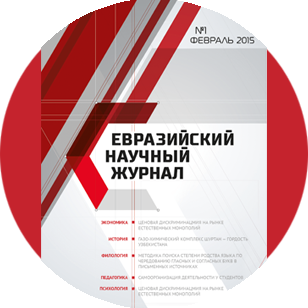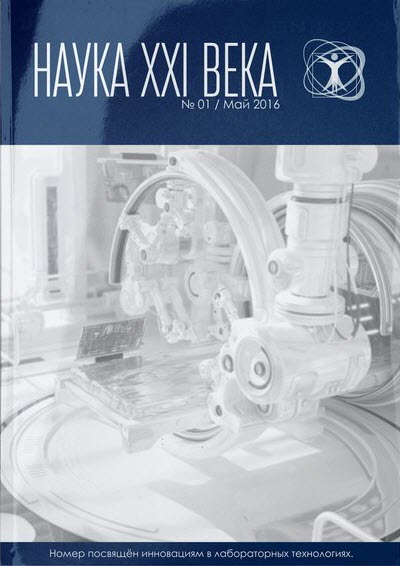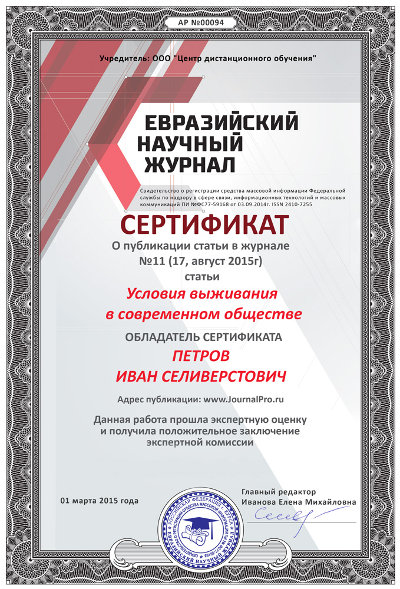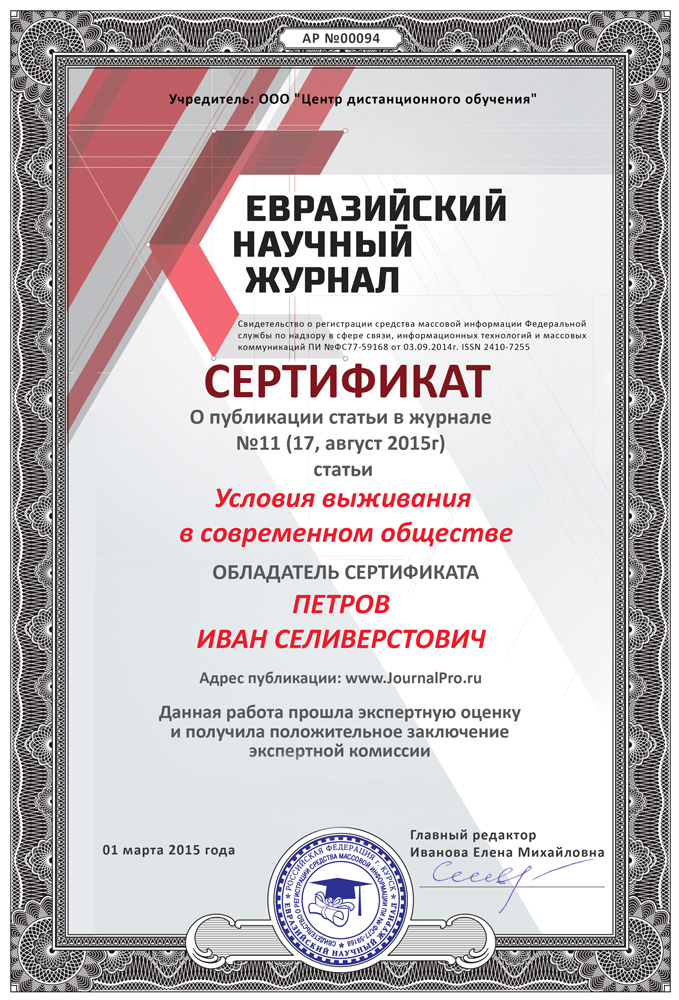Срочная публикация научной статьи
+7 995 770 98 40
+7 995 202 54 42
info@journalpro.ru
The use of Personal names and Diacritics in Modern English.
Рубрика: Филологические науки
Журнал: «Евразийский Научный Журнал №4 2017» (апрель, 2017)
Количество просмотров статьи: 2865
Показать PDF версию The use of Personal names and Diacritics in Modern English.
Akramova Takhmina Kamiljonovna
(Sam SIFL)
Personal names are the names given to people, but can be used as well for some animals (like race horses) and natural or man-made inanimate objects (like ships and geological formations). As proper nouns, are almost always first-letter capitalized. Exceptions are made when the given individual does not want their name to be capitalized, and the lowercase variant has received regular and established use in reliable third party sources.
Personal names are transcribed into English spelling but generally not Anglicized or translated between languages; it was also mentioned in the case with place names.
Let us look at the examples:
Aleksandr Sergeyevich Pushkin (Александр Серге́евич Пу́шкин) was a ...
Canute (sometimes Cnut; Danish Knud) is the ...
Personal names are also called eponyms. An eponym is a word derived from the names of real, fictional, mythical or spurious character or person. One who is referred to as eponymous is someone that gives their name to something, e.g. Julian, the eponymous owner of the famous restaurant Julian’s Castle.
In different cultures, time periods have often been named after the person who ruled during that period:
· One of the first recorded cases of eponymy occurred in the second millennium BC, when the Assyrians named each year after a high official.
· In Ancient Rome, one of the two formal ways of indicating a year was to mention the two annual consuls who served in that year. For example, the year we know as 59 BCE would have been described as „the consulship of Marcus Calpurnius Bibulus and Gaius Julius Caesar”. Under the empire, the consuls would change as often as every two months, but only the two consuls at the beginning of the year would lend their names to that year.
· In the Christian era, many royal households used eponymous dating by regal years. Although The Roman Catholic Church finally used the Anno Domini dating scheme based on the birth of Christ on both the general public and royalty.
· Government administrations or political trends often become eponymous with a government leader. North American examples include the Nixon Era, Trudeaumania, Jeffersonian economics, Jacksonian democracy, McCarthyism, Thatcherism, Kennedy’s Camelot or Reaganomics.
· British monarchs have turned eponymous throughout the English speaking world for time periods, fashions, etc. For example, Elizabethan, Edwardian, Georgian and Victorian .
Places and towns can also be given an eponymous name through a relationship (real or imagined) to an important figure. Peloponnesus, for example, was said to derive its name from the Greek god Pelops. In historical times, new towns have often been named after their founders, discoverers, or after notable individuals. In science and technology, discoveries and innovations are often named after the discoverer or to honor some other influential workers. Examples are Avogadro’s number, the Diesel engine, meitnerium, Alzheimer’s disease and the Apgar score. Some books, films, video, and TV shows have one or more eponymous principal characters: Robinson Crusoe, the Harry Potter series, Seinfield and I love Lucy, for example.
There are thousands of eponyms in everyday use of English language today and study of them yields a fascinating insight into the rich heritage of the world’s most popular language and its development.
· Albums: David Bowie: David Bowie; Cher: Cher. Adages: Murphy’s law — ascribed to Edward A. Murphy who stated „If there’s more than one way to do a job, and one of those ways will end in disaster, then someone will do it that way.”
· Adjectives: parkinsonian — James Parkinson (as in parkinsonian syndrome).
· Cartoon characters: Baby Face Finlayson, from The Beano comic — Baby Face Nelson, Nero, Belgian comic character by Marc Sleen is named after the Roman emperor Nero.
· Chemical elements: curium— Pierre and Marrie Curie, promethium (Pm, 61) — Prometheus, a Titan from Greek mythology.
· Human anatomical parts: Achilles tendom — Achilles, Greek mythological character, Adam’s apple — Adam, Biblical character.
· Inventions: Braille — Louis Braille, diesel engine — Rudolph Diesel.
· Mathematical theorems: Ptolemaios theorem (geometry), Atkinson’s theorem (operator theory).
· Prizes, awards and medals: Nobel Prize — Albert Nobel, O. Henry Awards — O. Henry.
A list of used literature
- Everaert M. (1995). Idioms. Structural and psychological perspectives. Lawrence Erlbaum Associates.
- Ifill T. Seeking the Nature of Idioms: A Study in Idiomatic Structure. Haverford College. (2002)
- Locke J. (1869) An Essay Concerning Humane Understanding.
- Longman Dictionary of Contemporary English (2003).
- Longman idioms dictionary (1999). Longman.
- Makkai, A. (1972). Idiom Structure in English. The Hague: Mouton.









